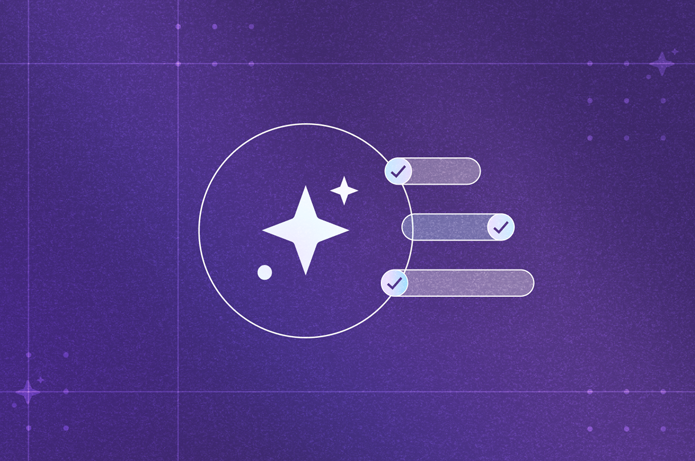Our recent webinar explored how HR professionals can spot the signs and symptoms of various clinically significant eating disorders, and ways to approach and support someone who is struggling.
This topic is personal to each of our panelists, who have all suffered from an eating disorder.
After a decade-long battle with various eating disorders, Johanna Kandel founded the National Alliance for Eating Disorders. Erin Parks, Ph.D is a clinical psychologist and researcher, and co-founded Equip, a virtual eating disorder program.
Carly Newhouse, LCSW, is a Senior Manager of Provider Partnerships at Spring Health, and began the webinar by sharing her story. Carly battled Anorexia Nervosa from ages 16 to 18, and says, “Eating disorders are rarely private. They are oftentime, but not always, visible on our bodies. The associated stigma and shame was brutal for all of us, including my little sister.”
It took months for Carly’s parents to find the right level of care for her. “I remember overhearing them sobbing at night, as they tried to determine if they should spring for a top provider whose cost would bring them close to bankruptcy or try the in-network option that didn’t feel like the right fit. How does a caregiver make that choice, especially when the stakes are so high?”
Eating disorders are a mental illness
They are not a choice and they’re not a phase.
Johanna says, “Eating disorders are actually a brain-based illness, and while there are definitely aspects like family, society, and life that might trigger an eating disorder, we’ve found that the brains of people who have an eating disorder are wired a little bit differently.”
When someone is struggling, it’s not their fault. A full recovery is possible, but it takes an entire village.
Johanna shared these statistics:
- Eating disorders are the second deadliest mental illness, following opioid addiction.
- They have a 4-5% mortality rate—nearly one person dies every 52 minutes.
- About 5 million Americans will develop an eating disorder every year.
- There was a 50% increase in eating disorders during the COVID-19 pandemic, and hospital visits doubled
How to recognize the signs
Eating disorders are secretive by nature, making it difficult to know if someone is suffering—and you often can’t tell by a person’s appearance.
Warning signs occur in several areas, and some initially appear innocuous or are societally-normed. Erin shared these six areas to examine:
- Food and Eating: Look for changes in what they’re eating and the amounts
- Activity and Exercise: What is their level of activity and exercise? Are they using more calories than they’re bringing in?
- Mood: Does their mood change more frequently, or are they experiencing big emotions?
- Social: Are they starting to socially isolate?
- Thinking: Are they more critical about food or their body?
- Medical: Schedule a doctor’s visit and bring this Lab Coat Card with you, to help the physician know exactly what to look for
How to start the conversation
Kids and adults who are struggling typically don’t want to talk about it, which makes sense, given the secretive nature of this illness.
Johanna says, “Leave weight out of it. Instead ask, how can I help you reclaim your brain?”
To dig deeper, she recommends asking, on a scale of 1-10, how often:
- Are you thinking about food?
- Do you want to be thinking about food?
- Are you thinking about your body?
- Do you want to be thinking about your body?
She says, “If someone is spending more time thinking about food and their body than they want to, that delta is the real eating disorder—it’s their brain being tyrannized by these thoughts.”
Eating disorders do not discriminate
They affect people of all genders, race, ethnicities, and socioeconomic status. Boys and men make up as much as 40% of people with eating disorders, and a recent CDC study found that three times as many boys are experiencing eating disorders than ever thought before.
Johanna says, “Up until 10 years ago, it was the same kind of caller. Now, there is no specific call. We’re getting calls from 5 and 6 year olds, and also from 80 and 90 year olds, folks from all races and genders. We’ve had an increase in calls from substance use centers—there is a 50% overlap here.”
Eating disorders tend to be part of a perfect storm that also includes anxiety, anxiety, depression, substance abuse, or PTSD.
“I don’t think I’ve met anyone who only had an eating disorder,” says Erin. “People also have borderline, bipolar, PTSD, anxiety, or depression. Restricting and not eating, binging, purging can make people feel better.”
How can HR professionals can help
Your employees are often part of a family, and eating disorders affect every member of your family. Showing that you’re educated and aware of the danger and impact of an eating disorder is helpful.
Here are ways HR leaders can support their employees:
- Put out informational brochures
- Send out an email blast with resources
- Host or share a webinar
- When you’re marketing eating disorder awareness events, avoid reinforcing the stereotype of who struggles in the stock photos you choose, i.e. white cis-gender girls
- Be careful with your general language, keeping in mind that half of your employees who are struggling are probably men
- Don’t do any work-related weight loss challenges
Taking steps toward treatment
When it comes to treatment, Erin says, “Start with the lowest level of out patient care possible, because that allows you to live your life and build a life worth living. If you’re always in treatment, that’s all you know.”
Here are the steps that both Erin and Johanna recommend to begin the road to recovery:
- Start with food. So many eating disorder symptoms stem from malnutrition, and eating regularly, 3-4 times a day, is the best medicine on the way to recovery.
- Seek out specialized treatment. It’s critical to find the right care. If doctors or clinicians don’t have eating disorder expertise, they can often do more harm than good.
- It takes a village, so build your support network. This ideally includes your family and close friends, a dietician, and a therapist.
Johanna adds, “For so long, I thought I had to fix this, heal this on my own. ‘If I only wanted it enough, if I only had enough willpower, I could heal.’ That’s how it feels to individuals experiencing an eating disorder—’if I can’t do this on my own, there’s something wrong with me.’ Treatment is not a luxury, it’s a necessity.”
Q&A with our panelists
We received a lot of great questions during the webinar that we weren’t able to get to. Here are responses provided by the National Alliance for Eating Disorders.
When someone is recovering and you can see them going back to binging for example, how can I help them?
Asking them how you can help by using “I” statements is a great way to learn what feels most helpful for them. What we might think is helpful may not be what they are wanting in that moment, so keeping it simple for them to specify their needs helps them use their voice, and allows you to support them how they want.
For example: “Hey, I know things can feel more overwhelming than other moments. Is there any way I can help?”
I used to be a special education teacher and I saw a lot of kids with selective eating habits centered around their anxiety surrounding foods (kids with ASD). What kind of counseling can be offered to them? Would this be covered in Speech therapy, OT, or PT?
Research has shown links between autism and eating disorders. We always recommend a team approach to treatment if possible. This would include a psychotherapist, dietitian, PCP, and psychiatrist if needed. Speech-language pathologists and occupational therapists can also be integral members of a treatment team.
Do you have professionals that specialize in the unique case of ED with celiac disease? Clearly, a tricky one, as hyper-focused eating is needed to manage celiac disease.
Yes. The Alliance has a database with providers from all over the country, called findEDhelp. We can look into whether providers in your area or who accept your insurance specialize in the treatment of celiac disease.
However, many dietitians that work with eating disorders are familiar with celiac disease. Dietitians specialized in eating disorders will work on navigating the restrictions needed to manage celiac disease and also to improve the individuals relationship with food and their body.
There were additional questions about an individual or their loved one who is struggling with an eating disorder. To better support and guide these specific concerns, please reach out to the National Alliance for Eating Disorders’ Referral Team. These are therapists who can help connect you with potential referrals, resources, and steps to support your loved ones or to begin recovery yourself. Visit their website or call 866-662-1235 for more information.
Watch the webinar on demand to learn more about how you can support employees who are struggling with an eating disorder, and their families.
Additional Resources:

Shannon is a Senior Content Marketing Manager at Spring Health, and has 15 years of marketing experience. She is also a Certified Professional Coach, Energy Leadership Index Master Practitioner, introvert, and HSP. She loves writing about introversion and mental health, and is a regular contributor for Introvert, Dear and Highly Sensitive Refuge.


.png)
.png)
.png)




.png)




.png)


.png)



